Florida Frontiers Articles
Florida Frontiers: The Weekly Newspaper Articles of the Florida Historical Society is a weekly newspaper article covering history-based events, exhibitions, activities, places and people in Florida. The newspaper articles premiered in January 2014. We explore the relevance of Florida history to contemporary society and promote awareness of heritage and culture tourism options in the state.
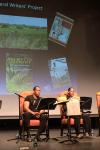
Cultural figures from Florida history including Stetson Kennedy, Zora Neale Hurston, and Harry T. Moore will come to life in a performance by the Young Minds Building Success Readers Theater from Jacksonville.
The original production “Stetson Kennedy Legacy: Man in the Mirror” will be performed at the Brevard Museum of History and Natural Science, 2201 Michigan Avenue, Cocoa, Saturday at 2:00 pm. The presentation is free and open to the public.
Young Minds Building Success Readers Theater is part of a larger effort to provide educational outreach.
“Young Minds Building Success was formed in an endeavor to encourage the individual potential for children and young adults, assist in the needs of families and communities, promote a realistic link between educational ser... click title or here for the full article
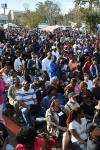
The 28th annual Zora Neale Hurston Festival of the Arts and Humanities was held January 21-29.
The event was presented by the Association to Preserve the Eatonville Community, and included a series of presentations called “Communities Conference: Civic Conversations Concerning 21st Century American Life in Communities of Color” in venues at Rollins College and Eatonville.
Elizabeth Van Dyke performed in “Zora Neale Hurston: A Theatrical Biography” at the Dr. Phillips Center for the Performing Arts in Orlando, and the ZORA! Golf Tournament was held at Metro West Golf Course. There was a tour of yards and gardens in Historic Eatonville.
The three day Outdoor Festival portion of the event featured vendors selling original arts and crafts, food vendors with fried fish a... click title or here for the full article
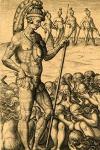
Since they were first published in 1591, the engravings of Theodore de Bry have been the most enduring images of Florida natives at the time of European contact.
“The de Bry engravings that were always thought to be based on Jacques le Moyne’s paintings have become the epitome of the best source for what Florida Indians looked like,” says Jerald T. Milanich, one of the most respected historical archaeologists in the state.
For more than four centuries, historians, archaeologists, artists, and the general public have relied upon de Bry’s images to provide information about the clothing, weapons, hair styles, headdresses, jewelry, tattoos, housing, baskets, canoes, cooking methods, and traditions of Florida’s Timucua Indians.
While some of what de Bry depicts in his e... click title or here for the full article
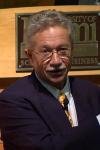
Two people with extensive careers documenting the history and culture of Florida will be in Brevard County this week discussing their new books.
On Friday, January 13, at 7:00 pm, author and archaeologist Jerald T. Milanich will discuss his new book “Handfuls of History: Stories about Florida’s Past” at the Library of Florida History, 435 Brevard Ave., Cocoa Village.
On Saturday, January 14, at 2:00 pm, author and folklorist Peggy A. Bulger will discuss her new book “Stetson Kennedy: Applied Folklore and Cultural Advocacy” at the Brevard Museum of History and Natural Science, 2201 Michigan Ave., Cocoa.
Dr. Jerald T. Milanich is Curator Emeritus of Archaeology at the Florida Museum of Natural History, Emeritus Professor of Anthropology at the University of Florida, a... click title or here for the full article
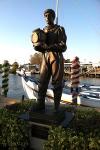
Since 1906, people have gathered at Spring Bayou in Tarpon Springs each January 6th to watch young men compete to find a submerged wooden cross. Today, thousands attend the ceremony. The unique Epiphany celebration is one example of the Greek culture that is still prevalent in Tarpon Springs.
In the city of Tarpon Springs you can listen to Greek music played on a bouzouki, try the pastry baklava, have a meal of lamb stew or a Greek seafood dish, sip the licorice flavored alcoholic beverage ouzo, and enjoy many other aspects of traditional Greek culture.
You can see the Neo-Byzantine style architecture of St. Nicholas Greek Orthodox Church, and watch the sponge divers unload their catch on the city dock downtown.
Tarpon Springs has the largest percentage of Greek Ame... click title or here for the full article
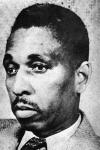
On Christmas night 1951, a bomb exploded under the Mims home of educator and civil rights activist Harry T. Moore. The blast was so loud it could be heard several miles away in Titusville.
Moore died while being transported to Sanford, the closest place where a black man could be hospitalized. His wife Harriette died nine days later from injuries sustained in the blast.
The couple celebrated their twenty-fifth wedding anniversary on the day of the explosion, and Harriette lived just long enough to see her husband buried.
The Moore’s daughter, Juanita Evangeline Moore, was working in Washington, D.C. in 1951, and was scheduled to come home for the holidays on December 27th, aboard a train called the Silver Meteor. She did not hear the news about her family home being... click title or here for the full article
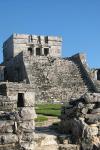
The statewide headquarters of the Florida Historical Society is in Cocoa, but the organization hosts their Annual Meeting and Symposium in a different Florida city each year. In recent years the event has been held in Orlando, St. Augustine, Fort Lauderdale, Tampa, Jacksonville, and Pensacola.
In 2013, to commemorate the 500th anniversary of the naming of our state, the Florida Historical Society hosted their annual meeting aboard a cruise ship that sailed out of Port Canaveral. The return voyage from the Bahamas followed Ponce de León’s path of discovery, sailing up the east coast of Florida.
“That cruise was the most popular conference we’ve ever had,” says Tracy Moore, president of the Florida Historical Society. “We’ve been around since 1856, so that’s really saying so... click title or here for the full article
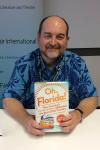
Florida is a popular destination for people around the world. It is also the place that brought terms such as “hanging chad,” “Stand Your Ground” and “Don’t Tase me, bro!” to our collective consciousness.
Craig Pittman is a columnist for the Tampa Bay Times, and the author of three books on Florida’s natural environment. Pittman’s latest book, “Oh, Florida! How America’s Weirdest State Influences the Rest of the Country” is humorous, but contains a lot of good information about Florida history and culture.
“I’m a big believer in using the ‘spoonful of sugar to make the medicine go down’ method of shoveling a lot of Florida history and culture down people’s throats,” says Pittman. “I tell a lot of the weird, wacky stuff that happens in Florida, but I use it as sort of a set... click title or here for the full article
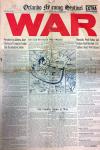
The Monday, December 8, 1941, Orlando Morning Sentinel “Extra” edition had a one word headline in bright red block letters nearly four inches tall: WAR.
Front page articles detailed the attack on Pearl Harbor, described the imminent declaration of war on Japan, and outlined what retaliation for the attack might look like.
The paper’s front page editorial stated, “This may be a long war. It may last for years. It may, probably will, involve us in actual fighting with Germany and Italy.”
The editorial went on to say, “That means sacrifice. That means that every soldier, every seaman must do his duty and be ready to answer any call. That means the citizen must give up his ideas of profit and easy living. That means the man…in every walk of life must surrender his own p... click title or here for the full article
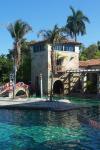
The beautifully landscaped streets of Coral Gables are lined with Mediterranean style buildings that have become a preferred form of Florida architecture. The affluent Miami suburb is recognized as an iconic planned community.
Coral Gables was the vision of George Merrick, who in the 1920s transformed his family’s citrus grove into a community that included what was then middle class housing, public recreational facilities such as the Venetian Pool, trolley transportation, the Biltmore Hotel, and an educational institution that would become the University of Miami.
Miami historian Arva Moore Parks has spent decades working to preserve the Coral Gables community. She is author of the award-winning book “George Merrick: Son of the Southwind, Visionary Creator of Coral Gables... click title or here for the full article
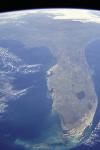
As part of the continent Gondwana 650 million years ago, the foundation of Florida was tucked between the land masses that would become South America and Africa. The rest of eastern North America was then part of another continent called Laurentia. As the Earth’s tectonic plates shifted, the basement rocks of our modern continents moved across the globe.
About 300 million years ago, Gondwana and Laurentia collided, forming the Appalachian Mountains in what would become North America and the Mauritanide Mountains in what would eventually be Africa. The Florida portion of Gondwana joined with Laurentia at a line that runs southwest to northeast through modern south Alabama, south Georgia, southern South Carolina, and eastern North Carolina.
By about 200 million years ago, Go... click title or here for the full article
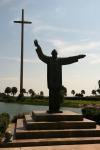
Tradition holds that the first Thanksgiving was celebrated in 1621, as English Pilgrims at Plymouth Plantation in Massachusetts shared a bountiful harvest with their Native American neighbors.
The first Thanksgiving celebration in North America actually took place in Florida.
Fifty-five years before the Pilgrims landed at Plymouth Rock, colonists in St. Augustine shared a feast of thanksgiving with Native Americans.
“Not until 42 years later would English Jamestown be founded,” says eminent Florida historian Michael Gannon. “Not until 56 years later would the Pilgrims in Massachusetts observe their famous Thanksgiving. St. Augustine’s settlers celebrated the nation’s first Thanksgiving over a half century earlier, on September 8, 1565. Following a religious service,... click title or here for the full article
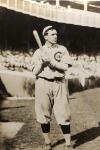
The Chicago Cubs won the 2016 World Series Championship. The Cubs came back from a 3-1 game deficit to play a full series of 7 games. The final game required an extra tenth inning for the Cubs to defeat the Cleveland Indians in a dramatic 8-7 finish, following a rain delay. The win ended a 108-year drought for the Cubs, the longest in Major League Baseball history.
The 1906 Cubs won a record setting 116 of 154 games played that season. The team was the first to play in three consecutive World Series Championships, and the first to win twice in a row, in 1907 and 1908.
The last time that the Cubs won the World Series, in 1908, Joe Tinker was an important player on the team. Tinker has strong ties to Central Florida, and played a key role in the development of the Orlando ar... click title or here for the full article
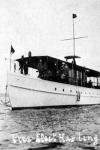
Today, residents of Florida may be the ones to decide rather the next President of the United States is Hillary Rodham Clinton or Donald J. Trump.
Florida is one of a handful of “swing states” that helps to determine the outcome of our presidential elections. In recent decades, Florida’s 29 Electoral College votes have gone to both Democratic and Republican candidates, making the difference between victory and defeat for both political parties in national races for president.
As important as Florida has become to our presidential election process, there has never been a president, or even a vice-president, from Florida.
“Florida is the largest state in the Union to have never had a president,” said James C. Clark, author of the book Presidents in Florida: How the Pr... click title or here for the full article
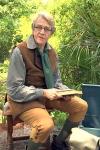
William Bartram fought alligators, befriended Seminoles, and meticulously documented the flora and fauna of eighteenth century Florida.
His book “Travels through North and South Carolina, East and West Florida, the Cherokee Country, the Extensive Territories of the Muscogulges, or Creek Confederacy, and the Country of the Chactaws, Containing an Account of the Soil and Natural Productions of Those Regions, Together with Observations on the Manners of the Indians,” known today as “Bartram’s Travels,” is a classic work of Florida literature.
William Bartram was a naturalist, botanist, artist, and explorer who followed in the footsteps of his father, John Bartram.
“Without his father’s influence, William would have never gotten interested in botany,” says J.D. Sutton,... click title or here for the full article
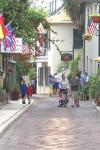
Aviles Street in St. Augustine is the oldest street in the United States. Many of the Spanish colonial buildings that line the narrow brick street now serve as museums or businesses catering to tourists.
On March 2, 1800, at about 5pm, two men had an altercation on Aviles Street that resulted in one of the men’s death.
“I’ve been researching criminal court cases from the colonial period for a while,” says James G. Cusick, curator of the P.K. Yonge Library of Florida History at the University of Florida. “I’ve looked at slanders, I’ve looked at a child abuse case, I’ve looked at a number of murders, and this one was very interesting to me.”
It was a Sunday afternoon and the shops on Aviles Street were closed. Several young apprentices were hanging out together, inclu... click title or here for the full article
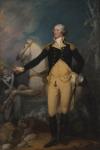
The importance of Florida in early American history is often overlooked.
The so-called “thirteen original colonies” that would lead to the creation of the United States exclude the fourteenth and fifteenth colonies of East Florida and West Florida.
St. Augustine, Florida was an active city for more than four decades before the English established a settlement at Jamestown, Virginia in 1607.
The Spanish gave Florida its name in 1513, and established the first continuously occupied European settlement in what would become the United States in 1565. After two centuries under Spanish occupation, the British took control of Florida in 1763.
The British separated the area into East Florida, with its capital in St. Augustine, and West Florida, with its capital in Pe... click title or here for the full article
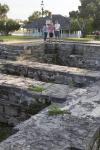
Some of the most interesting and controversial architectural ruins in Florida are in New Smyrna Beach.
In 1767, Scottish physician Andrew Turnbull established the colony of New Smyrnea, south of St. Augustine. Today, the town is known as New Smyrna Beach. Turnbull created his settlement during Florida’s British period which lasted twenty years, from 1763 to 1783.
Dot Moore spent more than 30 years working with professional archaeologists and historians, uncovering historic sites and artifacts in New Smyrna.
“Dr. Andrew Turnbull, along with a partner, William Duncan, received large land grants from the British government in 1766,” Moore says. “Turnbull himself was appointed plantation manager... click title or here for the full article
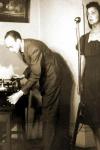
Folklorist, author, and activist Stetson Kennedy was born on October 5, 1916. Had he not died in 2011, Kennedy would have been 100 years old this week.
From 1937 to 1942, Kennedy traveled throughout Florida recording the oral histories, folktales, and work songs of the state’s diverse population. He spoke with Cracker cowmen, Seminole Indians, Greek sponge divers, Latin cigar rollers, African American turpentine still workers, and many others.
This work resulted in Kennedy’s book “Palmetto Country,” originally published in 1942.
The new exhibition “Stetson Kennedy’s Multicultural Florida” will open at the Brevard Museum of History and Natural Science in Cocoa on November 12, in conjunction w... click title or here for the full article
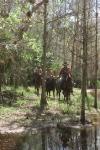
Moses Barber had simply had enough of his cattle going missing. He believed that David Mizell and his friends were periodically stealing from his herd. His rage reached a point where Barber publically declared that if Mizell set foot on his property again, he would be shot.
On February 21, 1870, David Mizell became the first casualty of the Barber-Mizell Family Feud. He was shot and killed on Barber property near Holopaw, Florida, in Osceola County.
Moses Barber first settled in North Florida in the 1830s. As the Seminoles were pushed to the south, Barber expanded his cattle operation into Central Florida. Some members of the Barber family built homes on the south end of the cattle run, near Fort Christmas. By the time the Civil War began in 1860, Barber was a prominent an... click title or here for the full article
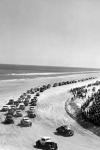
Daytona is known around the world as a focal point of auto racing, with several important annual competitions held at Daytona International Speedway. The history of racing in the area goes back to the early twentieth century, when auto races were held on the firm sands of Daytona Beach and Ormond Beach.
When racing competitions started on the beach in 1903, cars were a luxury item that only very wealthy people could afford.
“The automobile had been around, but the problem was, it was just a play toy for the rich,” says Daytona historian Leonard Lempel. “It’s really not until 1913, 1914, when Henry Ford invented the long assembly line, the price of the automobile dropped dramatically, and by the 1920s, it was the car of the middle class. In 1903, when racing started here on... click title or here for the full article
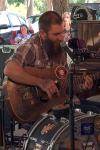
The Florida Historical Society will host the first annual Florida Frontiers Festival on Saturday, November 12, at the Brevard Museum of History and Natural Science in Cocoa, from 9am to 5pm. Main Stage performers include Florida bluesman Ben Prestage, the Bethune-Cookman University Gospel Choir, Mariachi Nuevo Guadalajara, folk musician Bob Lusk, and singer-songwriter Chris Kahl.
There will be selected vendors and demonstrators including Highwayman artist R.L. Lewis and folk artist Ernest Lee, food trucks, and a Children's Corridor. The Heritage Tent will feature storytellers and theatrical presentations including J.D. Sutton as naturalist William Bartram and the Brevard Theatrical Ensemble leading a Florida Folksong Sing-Along.
Inside the museum, will be the opening of th... click title or here for the full article
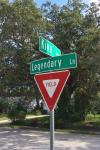
There were more cases of lynching per capita in Florida, between 1900 and 1930, than in any other state.
Alabama and Mississippi had more total cases of lynching during this period, but Florida was the statistical leader based on population.
A 1993 study indicates that between 1882 and 1930, one out of every 1,250 African Americans in Florida was lynched. A black person was almost twice as likely to be lynched in Florida as Georgia, and seven times more likely in Florida than in North Carolina.
The last known lynching in Brevard County happened in the summer of 1926. It was the third lynching of a black man in the area in two months. The victim’s name was James Clark, and a photograph of his lynching was made into a postcard.
An article about the murder appea... click title or here for the full article
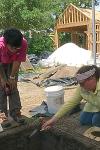
On August 15, 1559, Spanish conquistador Don Tristan de Luna sailed into what is now Pensacola Bay, leading a fleet of twelve ships with 1,500 colonists on board. Their effort to establish a permanent settlement was thwarted by a violent hurricane, which devastated the fleet.
One of the shipwrecks was discovered by underwater archaeologists in 1992, and another in 2006, but until recently, the terrestrial site of the attempted Luna settlement remained a mystery.
“We’re fortunate that we have a letter that Luna wrote after the hurricane, to the King of Spain, describing the storm,” says Greg Cook, assistant professor of maritime archaeology at the University of West Florida. “He said that it raged for twenty-four hours, it hit during the night, with great loss of ships and... click title or here for the full article







